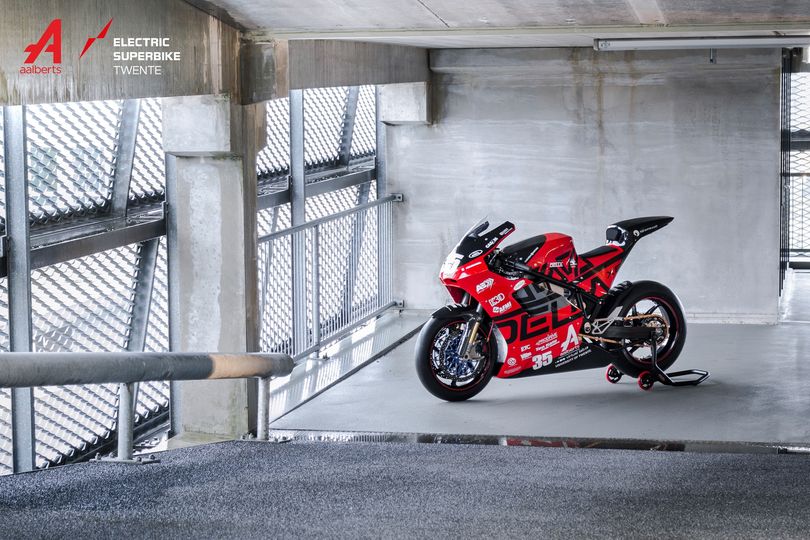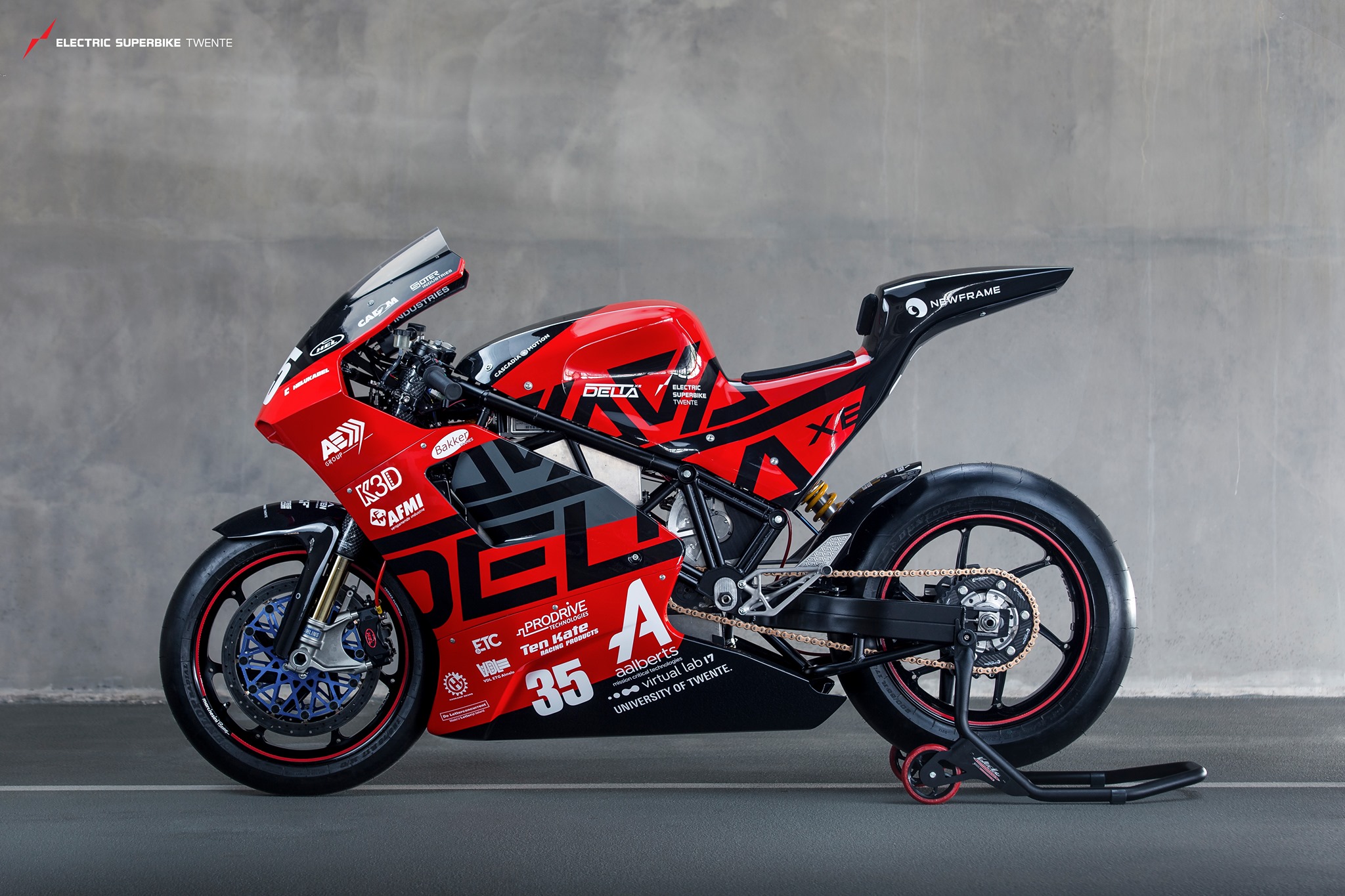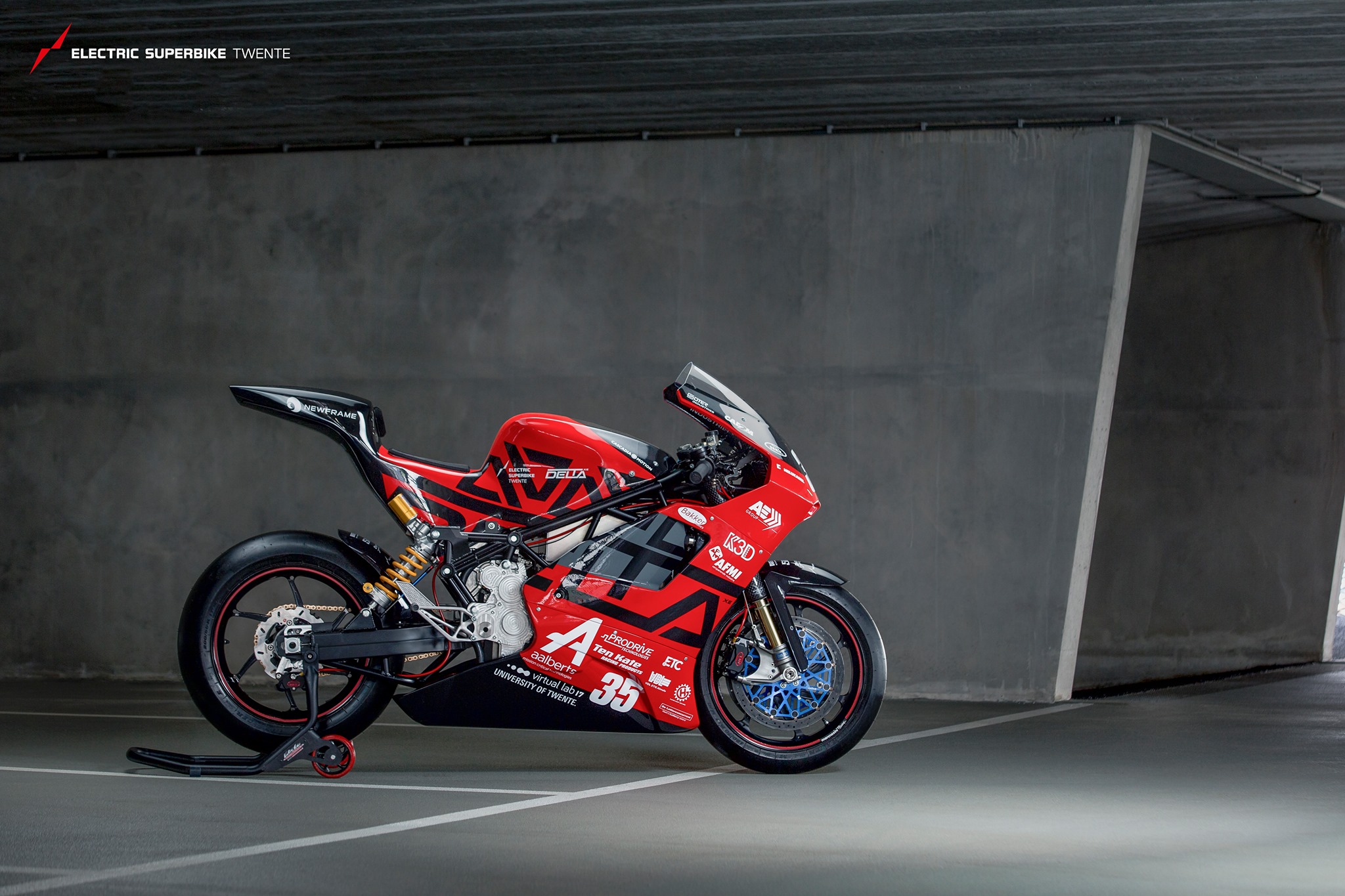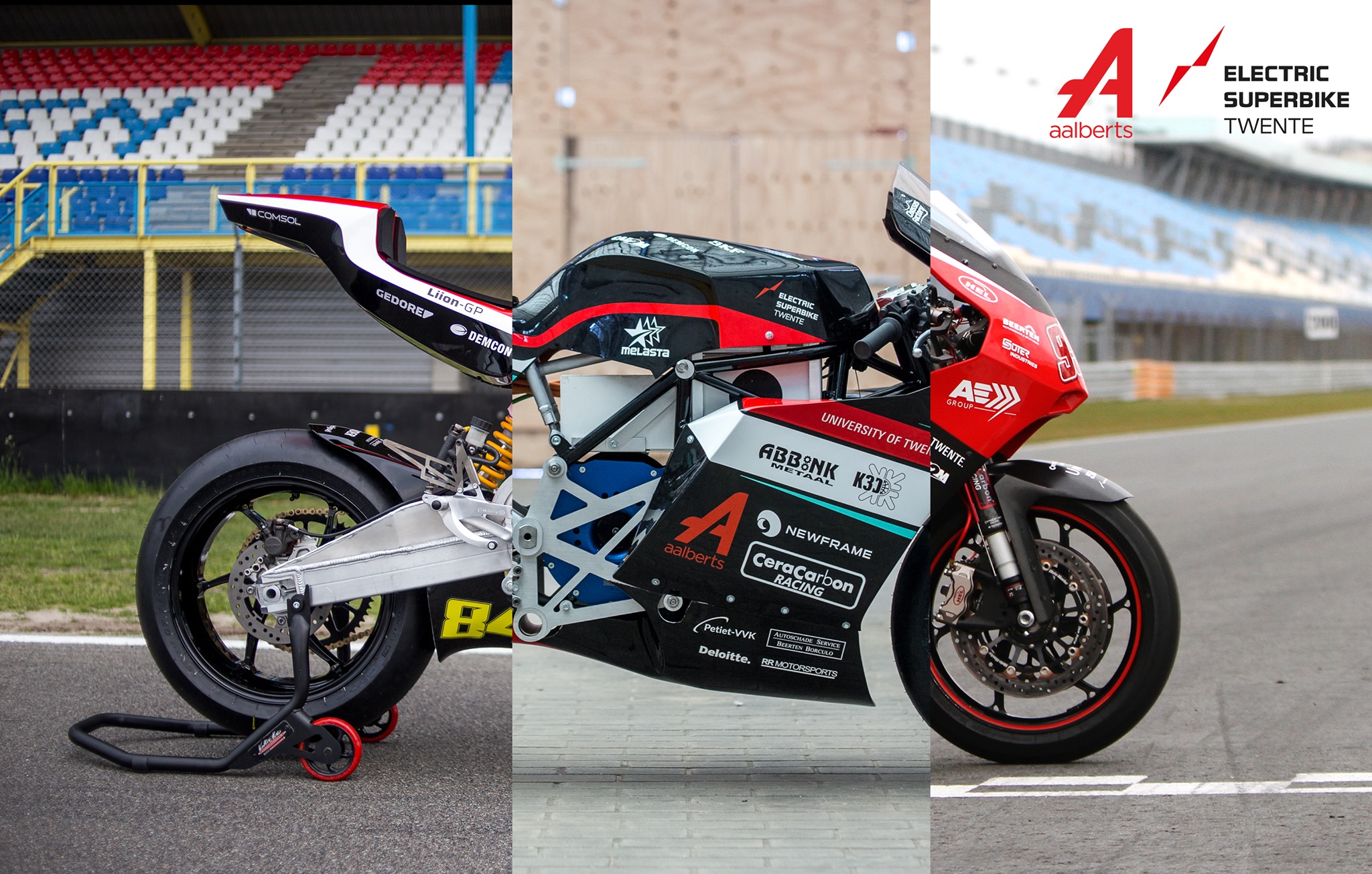Even the greenest among us know that building an electric motorcycle from the ground up isn’t something you can do overnight.
But if you’re racing with a clear vision of going to MotoGP, it might not hurt to start early.
A team of students at the Netherlands-based University of Twente has come up with the electric superbike.

Students of the University of Twente
And here starts the vision.
“Some people might have a question: “What did we do differently this year to improve our superbike?”
Well, our goal was to combine the knowledge that we had during the three prior years.
Therefore we focussed on reliability, power, and agility. The result is stunning”.

The platform
The Delta-XE is a research platform meant to test various new technologies and processes related to electric bike construction and performance.
As such, the bike features several one-off components that may find their way onto future ESS bikes, but most likely not until they are put through their paces thoroughly in this application.
While Delta-XE is the research platform and we could see this as the fourth superbike iteration.
The bike is considered the most influential electric vehicle globally at 150 kilowatts (equal to around 200 horsepower).
And, with a weight of just 219 kilograms (or 480 pounds), it’s light, too.
The energy comes from the permanent-magnet AC motor and a 13.5 kWh lithium-polymer battery pack with 576 cells.
The Cascadia MotionPM150DZR controller controls the setup.
LTN Servotechnik supplies the resolver in the Superbike. It delivers feedback to the motor controller, making sure that the magnetic field aligns with the rotor in the exact right way.
It increases power and efficiency, both critical in an electric superbike!

Bodywork
Further, the bodywork also has a “race-ready” feel, complete with a quick-release fastener system for easy maintenance. And repairs on the track and a rear wheel-hiding seat cover make the bike appear to have trick fairings.
The Superbike’s radiators and battery were placed in the hollow space between the engine. And the double-sided swingarm, which has helped lower the fuel tank and centralizes the bike’s mass for more stable handling.
The cluster features a speedometer, an odometer/trip meter, a voltmeter, lap times, counters for engine rpm and shift and neutral lights, and indicators for alarms, fuel level indications and ABS status.
The tachometer let the pilot check engine throbbing status without looking down.
Suspension
As far as the steel tubular chassis goes, it is designed by the Dutch company Bakker Framebouw.
For suspension, we get to see the CeraCarbon Racing that has Öhlins cartridge setup on the front. While on the rear, we see Öhlins TTX GP mono-shock.
Also present are HEL Performance monoblock callipers, and they manage the front Marchesini wheels and PVM magnesium on the rear.
The student team claims to have some good speed about the prototype and has 300 km/h as top speed and 0-100 km/h and 0-200 in nine seconds.
Source: Electric Superbike Twente





































